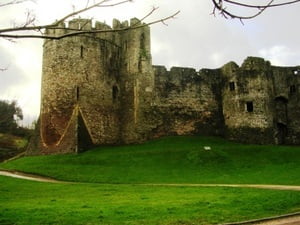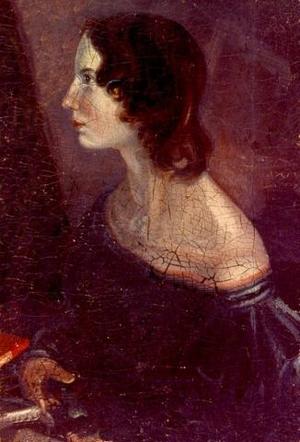Shakespeare uses the archetypal subjects of forgiveness and revenge in his play King Lear. Three groups of malicious characters seek revenge on their families, driving them towards the infernal pits of hell. For example, King Lear banishes Cordelia, Goneril and Regan shun their father, and Edmund betrays his father and brother. The only thing that could redeem these characters is seeking forgiveness. Since Goneril, Regan, and Edmund do not seek forgiveness or accept it, they die in misery and their stories end in tragedy. However, at the end of the play, Cordelia forgives Lear for ostracizing her and they restore their close relationship. As Lear promises that the two will “sing like birds in the cage,” he learns that nothing can come between the bonds of love, forgiveness, and respect (Shakespeare, scene III, act V). This act mirrors Heathcliff’s in Wuthering Heights because once Heathcliff forgives those who wrong him, he dies an enlightened man, just like Lear. Moreover, in Emily Bronte’s Wuthering Heights, imagery enriches themes in the novel, illuminating the importance of forgiveness and showing the destruction of greed, revenge, and selfishness.
Imagery enhances the importance of forgiveness as a primary theme in Bronte’s novel. After Lockwood sees Catherine’s book “Seventy times Seven” at Wuthering Heights, he dreams about forgiveness. As Jabes accuses the narrator of committing “the First of the Seventy-First” Lockwood feels overwhelmed as “every man’s hand was against his neighbor” (Bronte 24). This biblical illusion exemplifies the importance of forgiving others’ sins and shows the destruction of violence and revenge. Therefore, the characters must forgive seven times seventy-seven, or an infinite number of times, to be truly happy in life. In this way, they can move on and continue to grow without holding grudges. In addition, before Heathcliff can be happy with Catherine in the afterlife, he must forgive those who wrong him, and not remain as “that devil Heathcliff” (294). After a lifetime of inflicting pain and living in an isolated hell, Heathcliff eventually forgives the Earnshaws and the Lintons. Admitting to Nelly that “in every cloud, in every tree… I am surrounded with [Catherine’s] image,” he no longer has the desire to go out of his way to make Hareton’s and Cathy’s lives miserable (334). By forgiving Catherine, Hindley, and Edgar, Heathcliff finally sees Catherine’s ghost and joins her spirit in the afterlife. Bronte uses imagery to show that forgiveness benefits the forgiver, not just those he forgives. In this way, both sides can live and die with peace of mind.
Bronte uses animals in her imagery to express her belief that all should live life to benefit one’s self. Her character Heathcliff provides an excellent example of this connection. Like an animal, Heathcliff is too self absorbed to see past himself and attempts to destroy the lives of the Earnshaws and the Lintons. His extreme loyalty to Catherine and his ferocity to everyone else enhance his dog-like features. However his measures lead Bronte to describe Heathcliff as some sort of beast or dog. At one point of the story Nelly describes him as “a creature [not] of my own species…” (Bronte 166). By directly comparing Heathcliff to a dog, Bronte displays the canine like features that the two share. Like Heathcliff, Catherine also relies on her basic instinct when she decides to marry Edgar. Even though Heathcliff and her share a passionate love, Edgar provides money from a well-bred family, thus ensuring Catherine a comfortable life. Through Catherine and Edgar’s marriage, Bronte clearly displays her belief in relying only on one’s self: “we must be for ourselves in the long run; the mild and generous are only more justly selfish than the domineering; and it ended when circumstances caused each to feel that the one’s interest was not the chief consideration in the other’s thoughts,” (95). By breaking Heathcliff’s heart and wedding Edgar, Catherine exhibits her animalistic desire to ensure her survival. Through symbolism, Bronte takes the very single-minded nature of a canine, and relates it to her story, heightening her message in both a literal and poetic way.
Bronte utilizes imagery to communicate to readers the destructive effects of separation between star-crossed lovers. One symbol Bronte uses to relay this theme is the moor, the place where Catherine and Heathcliff’s love first comes to fruition. While playing on the moor, Catherine and Heathcliff realize how perfect they are for each other, and the moor becomes the strongest symbol for their love. Next, Bronte employs Thrushcross Grange as a symbol for the formal and elegant behavior of the Linton family. After Catherine injures her ankle while playfully spying on the Lintons with Heathcliff, she spends five weeks recuperating at Thrushcross Grange with the Lintons during which time “her manners much improved” (52). Throughout her time at the Grange, Catherine learns to enjoy the more refined behavior of the Lintons and develops a healthy admiration of Edgar Linton in the process. This part of the novel serves to plant the seed of separation between Heathcliff and Catherine, as Fate’s sharp jaws injure not only Catherine’s ankle but also the love between Catherine and Heathcliff. Bronte then uses a powerful metaphor for fate to describe why Catherine cannot marry Heathcliff. Confessing to Nelly that she has accepted Edgar’s marriage proposal, Catherine explains that “If the wicked man in [Heaven]” had not brought Heathcliff so low, she would have married him instead (81). Although she goes on to explain that she loves Heathcliff more than anything else in the world, Heathcliff storms off in fury before he can hear the rest of her story. The metaphor Catherine states separates her from Heathcliff and causes him to seek merciless revenge on Edgar and Hindley, which Bronte utilizes to powerfully reinforce the theme that devastation results when true love is severed.
Therefore, imagery enhances themes in Bronte’s Wuthering Heights, illuminating the importance of forgiveness and showing the destruction of revenge and selfishness between star-crossed lovers. Bronte uses imagery to expand the meaning of her novel, particularly concerning the two main locations, Wuthering Heights and Thrushcross Grange. For example, she describes the house as “descriptive of the atmospheric tumult to which its station is exposed in stormy weather” (2). However, the Grange represents a more Apollonian house where intellect, morals, and refinement reign over the emotions, compared to the Height’s animalistic environment. These contrasting settings attract and suit different characters. Heathcliff and Catherine find a heaven in Wuthering Heights because they are Dionysian characters, driven mostly by their emotions; Edgar, however, a man of class, loves the Grange. The imagery used to describe these locations adds symbolic meaning to the characters and illuminates their personalities. Strengthening the idea of mirrored characters and opposites, imagery enhances the meaning of the novel as a whole and adds to Wuthering Heights’ timeless nature.
Sources:
Wuthering Heights by Emily Bronte
King Lear by Shakespeare



